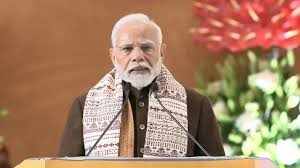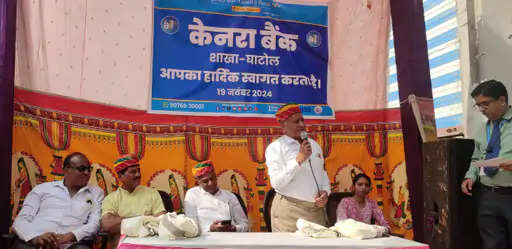Rajasthan News Desk !!! Hawa Mahal is a royal palace in Jaipur, the capital of the Indian state of Rajasthan. It was constructed in the year 1799 by Maharaja Sawai Pratap Singh near the metro station at Badi Chaupad in Jaipur, Rajasthan and was designed by architect Lal Chand Ustad to look like a ‘Rajmukut’. Its unique five-storey building, which is only one and a half feet wide at the top, looks like a beehive from outside, with 953 exquisite and attractive latticed windows, called Jharokhas. The original idea behind the lattices of these windows was to strictly follow the “purdah pratha” of the royal women, who could see the daily life activities in the streets and corridors below the palace through these windows without being seen. Additionally, due to the “Venturi effect”, cool air is constantly drawn into the palace through these intricately structured latticed Jharokhas, due to which the palace remains air-conditioned even in the scorching heat.
Built of lime, red and pink sandstone, this palace is located on the main road in the middle of Jaipur’s commercial center. It is a part of the City Palace and extends up to the Zenana Chamber or the Women’s Chamber. It is a unique experience to see it shining in the golden light of the early morning sun.
This building is dedicated to Lord Krishna and Radha
Hawa Mahal is a five-storey monument, with a height of 87 feet (26.15 m) from the main base. The topmost three floors of the palace are as wide as a room while the lower two floors also have an open courtyard in front, which is built in the rear part of the palace. The front part of the palace, which is visible from the main road in front of Hawa Mahal. Each of its small windows has very attractive and beautiful carved jaalis, kangaroos and domes made of sandstone. This unique structure itself has many semi-octagonal openings, which make it unique across the world. The interiors of the rear part of the building have different rooms built with minimal ornamentation of pillars and corridors and are similar to the topmost floor of the building.
The architect of this unique building was Lal Chand Usta, who also helped in designing the architecture and architectural plan of the city of Jaipur. Considering the decoration of other monuments of the city, the colour of this red and pink sandstone palace is a perfect testimony to the title of ‘Pink City’ given to Jaipur. The front of the Hawa Mahal is decorated with 953 unique carved holes (some of which are also made of wood) and it is a complete contrast to the back of the Hawa Mahal, as the back of the Hawa Mahal is completely plain. Its cultural and artistic heritage is Hindu Rajput sculpture.
The Hawa Mahal can be entered through the Royal Gate located on the side of the City Palace. It opens into a large courtyard with two-storey buildings on three sides and the magnificent Hawa Mahal to the east. This courtyard also houses an archaeological museum.
Hawa Mahal was the favourite resting place of Maharaja Jai Singh due to its exquisite interior decoration. All its rooms always had cool air flowing from the 953 windows located in the front, which had a cooling effect in summer and there were water fountains in the hall in front of all the rooms.
There are only stairs to go to the upper two floors of Hawa Mahal. It is said that keeping in mind the inconvenience faced by queens wearing long waistbanded Ghagra in climbing stairs, stairs were provided instead of stairs to enter its upper two floors.
Repairs and renovations
Hawa Mahal is maintained by the Archaeological Department of the Government of Rajasthan. In the year 2005, after a long gap of about 50 years, the palace underwent extensive repairs and renovation at an estimated cost of Rs 45679 lakh. Now some corporate houses are also coming forward to maintain the archaeological monuments of Jaipur, an example of which is the “Unit Trust of India” which has taken up the responsibility of maintaining Hawa Mahal.
Tourist Information
Hawa Mahal is situated on Badi Chaupad in the southern part of Jaipur city. Jaipur city is directly connected to all major cities of India by road, rail and air. Jaipur railway station is the central station of the broad gauge line network of Indian Railways.
Hawa Mahal does not have a direct front entrance. To enter the Hawa Mahal, there are entrances on the right and left side of the palace, from where you can enter the palace from the back of the palace.


